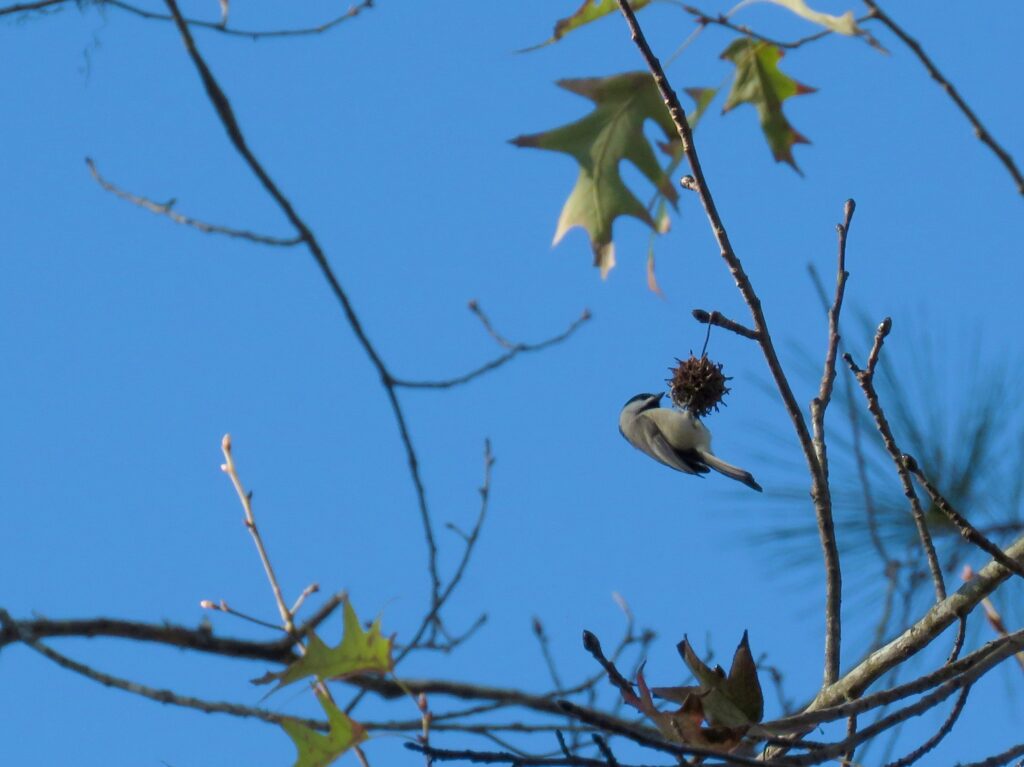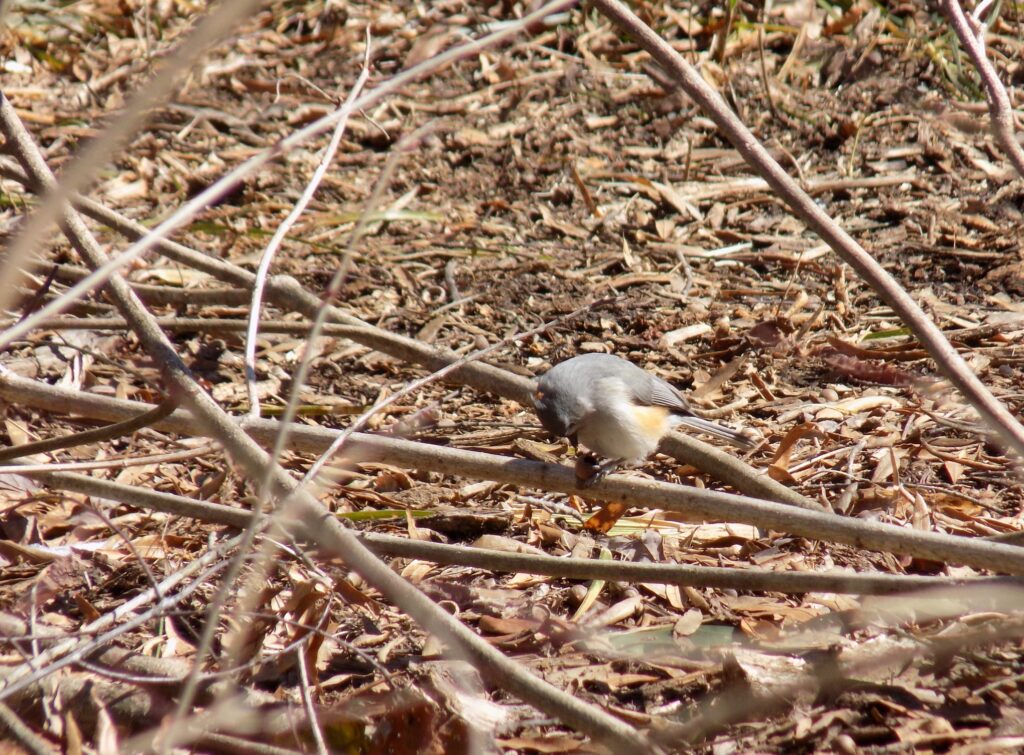




This week for Flora and Fauna Friday we have a pair of personable Parids: the Carolina Chickadee (Poecile carolinensis) and the Tufted Titmouse (Baeolophus bicolor).
Today’s Titmouse and Chickadee are both members of the Tit family, Paridae, and the only members of said family found here in the Lowcountry. Parids as a whole are small, vocal, social songbirds that inhabit woodlands. This is a description that fits our two birds perfectly. Chickadees and Titmice can be found living in small social colonies wherever trees abound throughout the state of South Carolina. They’re regular neighbors in the backyards of suburbia and staple feeder birds. Both eat a varied diet consisting primarily of insects and seeds.
The Carolina Chickadee is a minute monochrome bird. A small ball of clearly sectioned ivory, coal, and gunmetal with a short beak and round head, they’re hard to mistake for anything else. The Chickadee’s namesake alarm call of “Chick-A-Dee-Dee-Dee…” is far more slurred than the onomatopoeia leads you to believe but is nonetheless distinctive. The Tufted Titmouse is a small, subdued plumage songbird with a small pointed crest for a touch of flare. Their belly is a dingy white and their back an aluminum-gray with subtle chestnut flanks below their wings. Their “Peter-Peter-Peter” song can be heard ringing clearly through the hollow winter canopy. Both species are found throughout our woodlands on Edisto. Chickadees seem to me tolerant of planted pine and swamps and Titmice more plentiful in dense forests. The two species are non-migratory and nest in cavities. Chickadees and Titmice are curious creatures. They will often go out of their way to come fuss at any people or predators they feel are intruding on their turf. Sometimes drawing in a crowd of nearby songbirds who want to know what all the hubbub is about.
Resident Titmice and Chickadees are what are known as a nuclear species to bird watchers. During fall migration, mixed flocks of migratory songbird species move through the Lowcountry. They feed while snaking through the treetops on their journey south. Nuclear species, like our little Parids, attract these mixed flocks. Like tourists stopping to grab a bite and chat with the locals, these migrants collect around and tag along behind a Parid colony briefly before hopping back on the highway in the sky. Because of this, birders like to keep a watchful eye on flocks of Chickadees and Titmice in the hopes that a mixed flock will drop in to say hello.